Over the past decade, locally produced craft beer from small independent brewers has become a hot commodity. Ireland has had a long and complex relationship with alcohol and beer in particular and this new phenomenon reaffirms the deep cultural connection of drink and place.
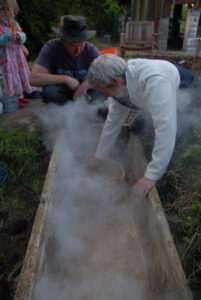
Arguably, the Irish craft beer experience extends back into the mists of time, or at least as far as the Bronze Age. Recent scholarship suggests that ‘Fulacht Fiadh’ in the west of Ireland served as early beer brewing cauldrons reinforcing the importance of craft beer in early Irish life (Quinn and Moore, 2007; https://archive.archaeology.org/1201/letter/fulacht_fiadh_ale_bronze_age_ireland.html). The construction and scale of Fulacht Fiadh suggest that beer was locally produced, utilising local knowledge and ingredients – mirroring a more modern craft phenomenon. Typically, and currently, craft beer is likewise made in small batches and prepared traditionally by independent producers. Tradition informs a modern practice – an age-old way people engage with this locally fermented foodstuff.
So why the excitement surrounding Irish independent beer?
Over the past decade, mirroring a similar global trend, per capita beer consumption has declined, falling from 113 l/capita in 2003 by 31% to 79 l/capita in 2017.
Irish consumers are drinking less beer.
However, Ireland remains a beer-drinking country and currently ranks 8th amongst national beer consumers in Europe, according to this infographic from the Brewers of Europe.
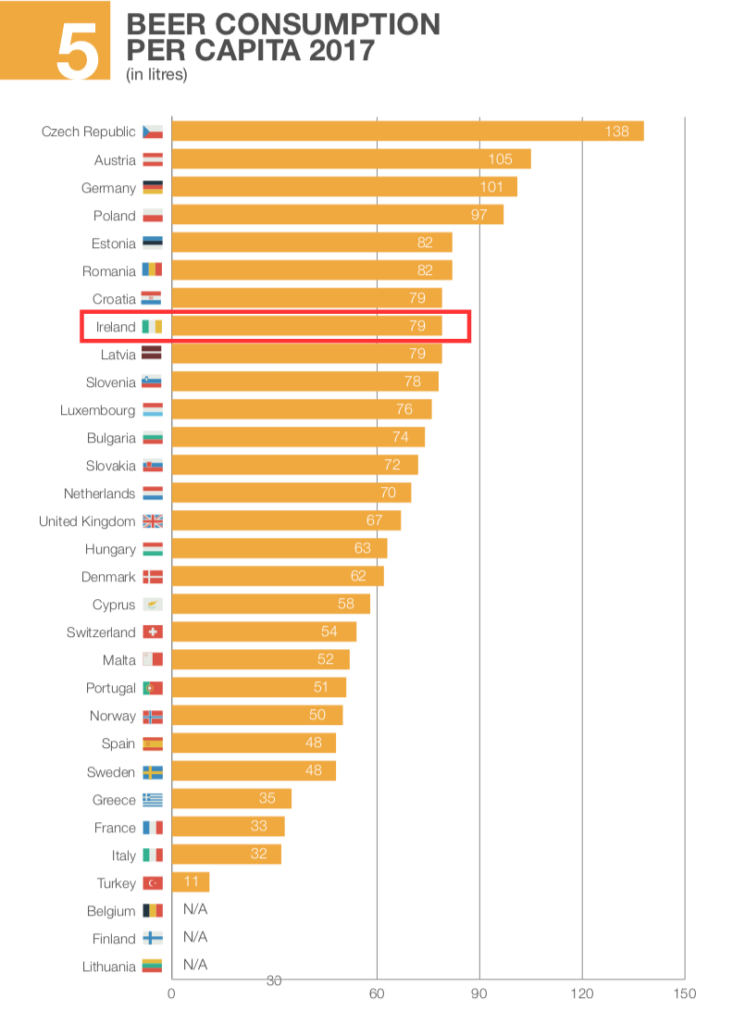
In the wider context of beer production, this decline in per capita consumption appears to be reflected in overall beer produced in Ireland. Over the past 15 years, this has declined from 9,367,000 hL in 2006 to 7,680,000 hL in 2016. So, less beer is being produced, and less beer is being consumed. A rather dismal picture around beer in general yet ….
The picture for Craft Brewers is very different and very positive
Despite the decline in overall beer production (which includes independent producers as well as larger multinational brewers such as Heineken and Guinness/Diageo), the amount of craft beer produced by Irish microbreweries has risen dramatically from 26,000 Hl in 2011 to over 176,000 Hl in 2016. This dramatic explosion in output reflects an equally impressive rise in the number of craft brewers.
From a low of 7 breweries in Ireland in 1995, there are now over 89 microbreweries in Ireland today.
Moreover, the rise in craft beer volume stands in contrast to the overall trend of beer production. From 2011 to 2016, the beer production by small independent craft brewers rose from 26,000Hl in 2011 by over 675% to over 176,000Hl in 2016.
However, this rapid and explosive growth in craft breweries should properly be seen within its historical context. If we take a longer view of the data, the more recent phenomenon possibly suggests a return to a more traditional form of production. In 1795, for example, a survey completed by a committee of the Irish House of Commons () indicated over 600 breweries scattered across Ireland. Over the next two decades, there was a substantial decline in the number of breweries through both consolidation and acquisition by larger brewers to become regional, national and ultimately global – as well as simple changes in business fortunes.
Further substantiating this return to more traditional forms, the spatial distribution of these ‘new’ independent craft breweries follows a very similar pattern to earlier days. Extracting the data from the sources such as BEOIR (https://beoir.org) and mapping it, we can see the pattern reflected quantitatively in the bar chart above and spatial on the maps below.
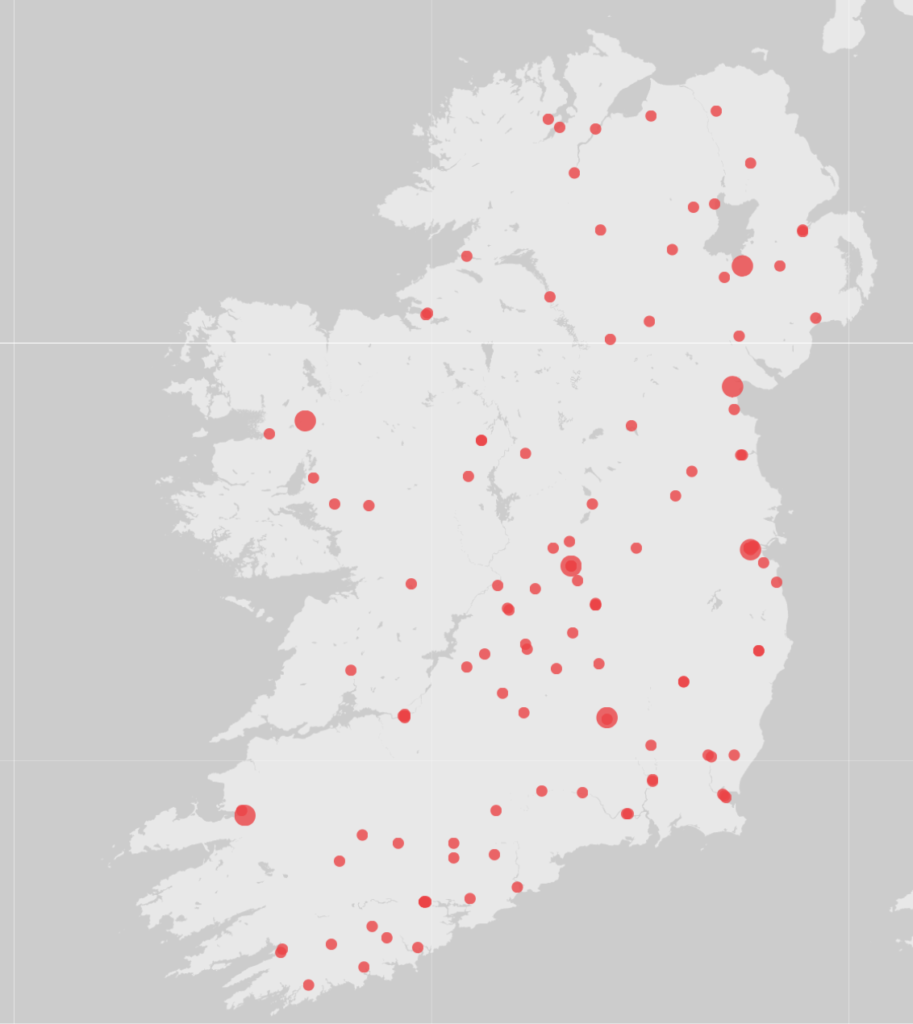
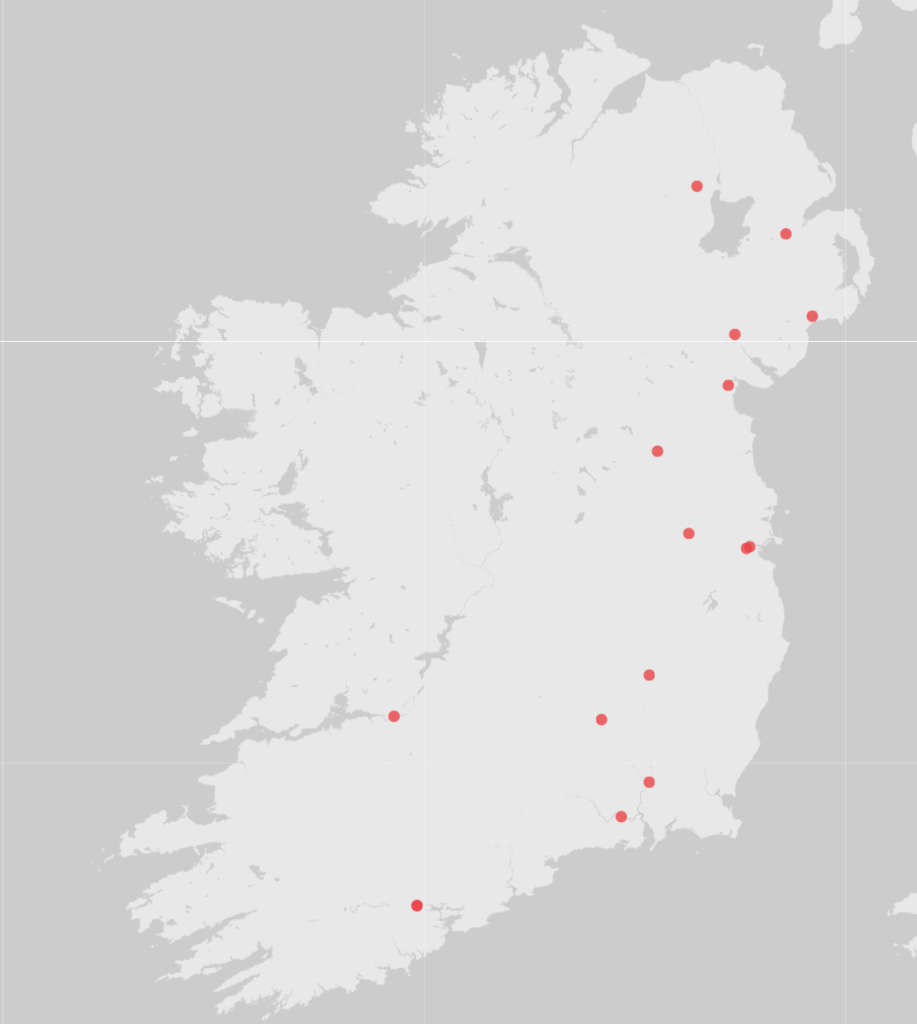
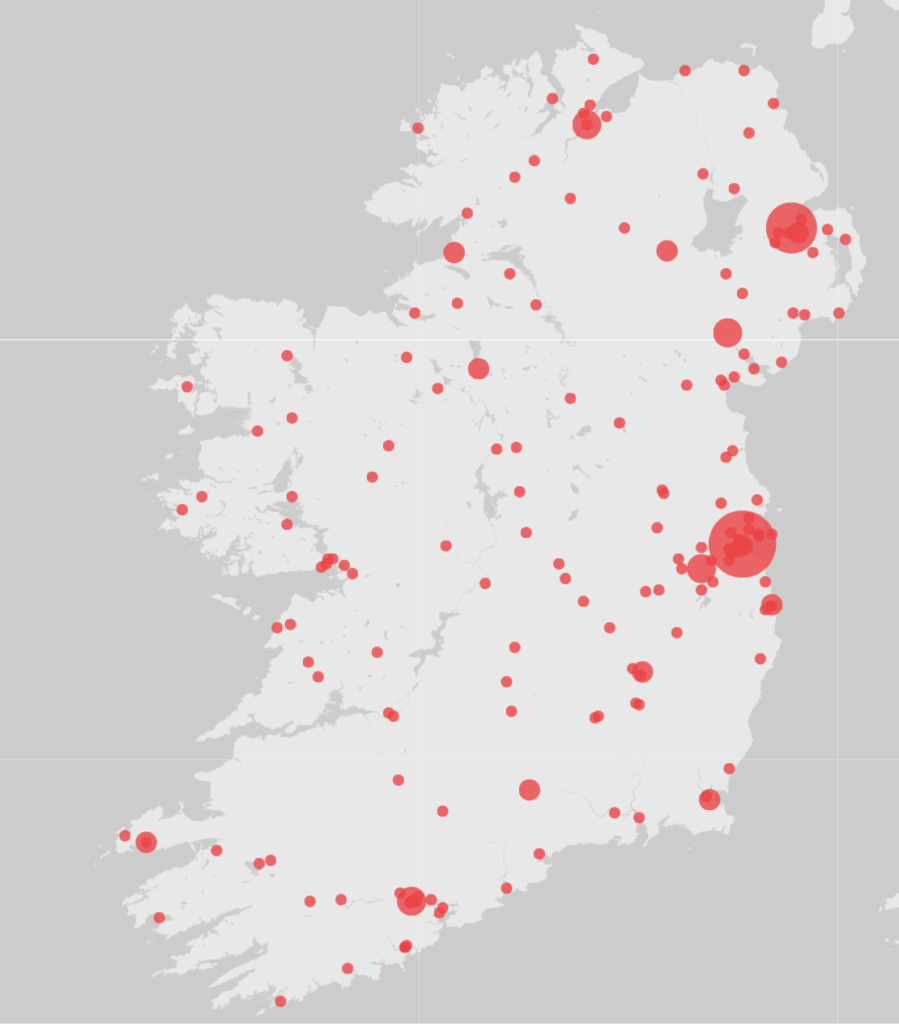
Consolidation saw smaller local breweries consolidate into larger regional breweries, serving increasingly larger markets.
As data from the ICBA demonstrates, the amount of beer exported from Ireland rose over the 19th and 20th centuries.
This industrialisation resulted in a homogenisation of beer through mass production and a changing consumer demand for variety in beer, which contributed to the subsequent rise of craft breweries producing more diverse types of beer in response to the consumer-driven reactions.
The subsequent demand for diversity is demonstrated by the wide varieties of beers produced by craft brewers in Ireland. As this interactive sunburst chart shows, the number of unique beer recipes these Irish craft breweries produce is vast and diverse. The volume slices on this chart represent the distinct recipes, and the proportions allow you to explore subvarieties categorised using the taxonomy developed by the Brewers of America (BAA, https://baa.org). Individual subvarieties can be explored by clicking on a slice of the pie.
One commonly held assumption about craft beer is that it has a higher ABV (alcohol by volume) than its mass-produced industrial counterpart. Although we don’t have the data to allow a direct comparison of this, what we can see is that over the past eight years, the average ABV of beer produced in Ireland has slowly crept upward, rising from just under 5% in 2010 to a slightly more robust 5.69% by 2018.
This short data-driven exposition attempts to demonstrate that the recent explosion in the number of Irish craft breweries is substantial, especially given the shrinking beer market in Ireland. However, by looking at it in a wider context, it is also evident that it may demonstrate a return to more traditional forms of beer production. These more conventional forms were less industrialised and did not demonstrate consistent taste or quality across small production batches. Although the Irish craft beer drinkers of today can be assured of quality in production, that same diversity of products has been recognised and seized upon to produce a stunning panoply of beer taste offerings.
Tools Used
datawaraper.de
Palladio
flourish.studio
OpenRefine
References
Brewers of Europe, 2018. Beer Statistics 2018. [online] Brussels: The Brewers of Europe, p.30. Available at: https://brewersofeurope.org/uploads/mycms-files/documents/publications/2018/Statistics-201812-001.pdf [Accessed 10 Feb. 2019].
Irish Craft Beer Association, 2018. Beer Statistics 2018. [online] Cork: Irish Craft Beer Association. Available at: https://icba.ie/uploads/2018/[Accessed 11 February. 2019].
Quinn, B. and Moore, D., 2018. Ale, brewing and fulacht fiadh: Archaeology Ireland – Moore Group. Available at: http://www.mooregroup.ie/2007/10/the-archaeology-ireland-article/ [Accessed 10 February 2019].
